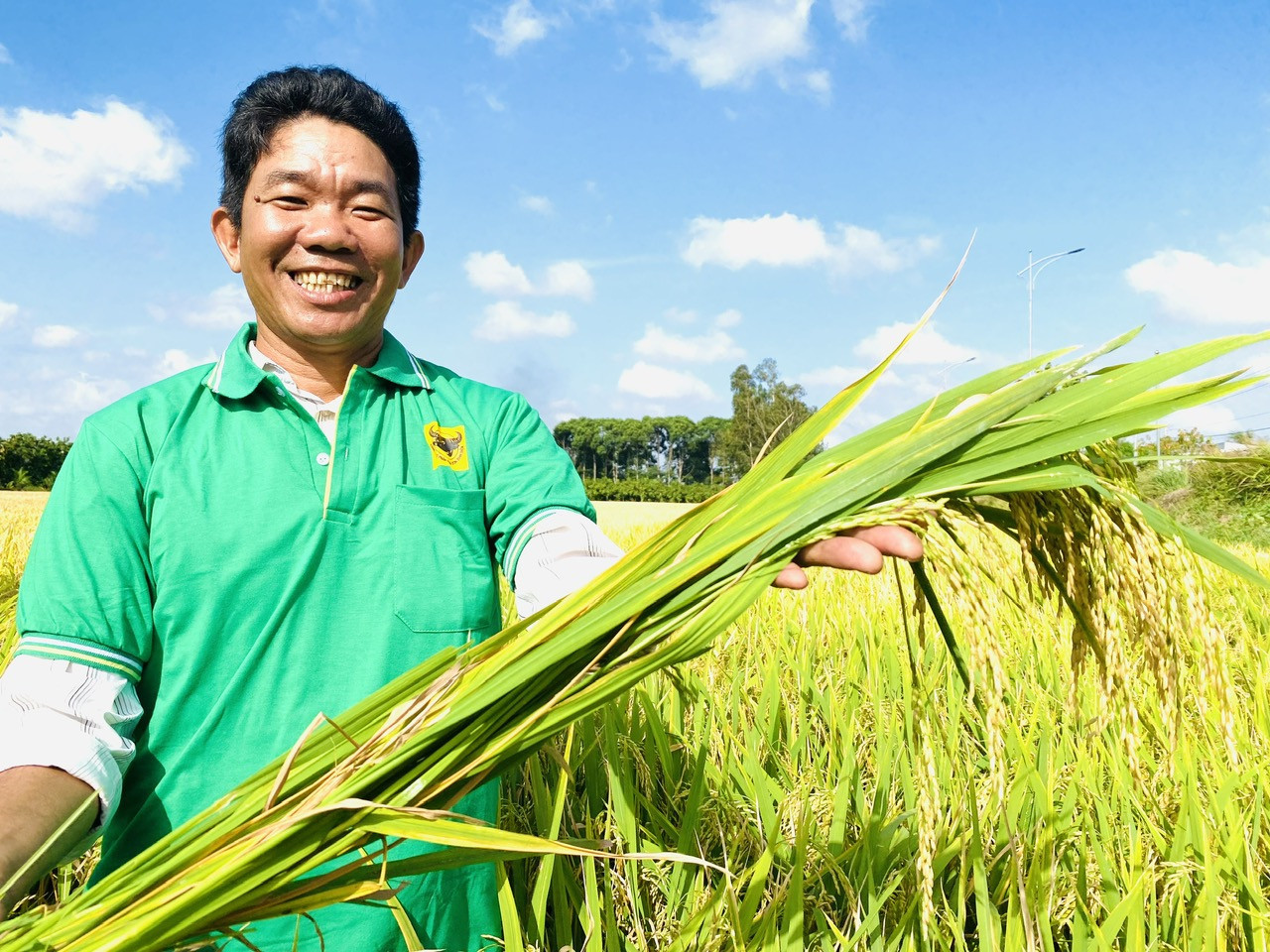
According to the deputy director of the General Department of Crop Production, Le Thanh Tung, under the "1 million hectares of high-quality low-emission rice cultivation project", the agency has built seven pilot models in five provinces: Kien Giang, Soc Trang, Tra Vinh, Dong Thap and Can Tho.
The first harvests showed that the rice yield under the pilot models was higher than the traditional cultivation method, while the cultivation area increased without having to call on farmers to apply the new method.
The new cultivation techniques have reduced the volume of seeds needed by 30-50 percent, or 30-80 kilograms per hectare. The method helps save VND0.6-1.6 million per hectare, and also increases yield.
The volume of used fertilizer has decreased by 30-70 kilograms per hectare, which means that farmers can save VND0.7-1.6 million per hectare.
Meanwhile, theoretical yield from models show considerable growth. In Can Tho and Soc Trang, the models using OM5451 and ST25 varieties had yields 3.9-7.5 percent higher and 8.9-13.7 percent, respectively, than the traditional method.
The economic efficiency of the models is positive, with net profit VND13-18 million higher per hectare in the summer-autumn and VND1-6 million per hectare in autumn-winter crop.
Under the pilot model in Soc Trang, the emission volume was 9.5 tons CO2e per hectare per crop, lower than the 13.5 tons of CO2e under traditional cultivation method, which means a reduction of 4 tons of CO2e per hectare per crop. The figure was 5.4 tons of CO2e in Tra Vinh.
MARD (The Ministry of Agriculture and Rural Development) and the Transformative Carbon Asset Facility (TCAF) are discussing pilot payments for greenhouse gas emission reductions under the 1 million hectare low-emission farming program. After the two sides reach an agreement, farmers will receive money for carbon credits when growing low-emission rice.
Also, farmers also can get additional money from straw. MARD has cooperated with international organizations to guide farmers in how to treat straw effectively, process it into organic fertilizer, and use it to grow mushroom and use as animal feed. In the near future, it can be used as material for industrial incinerators.
In addition, the 1 million hectare project, being deployed in 12 provinces in Mekong Delta, helps form chains of links between farmers and businesses, and between businesses and cooperatives.
However, Tung pointed out that while the rice quality has improved, the output is still unclear. Therefore, building close links via partners and related parties in the project is important.
Tam An